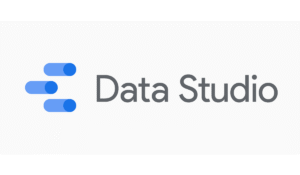In today’s digital landscape, visibility on search engines is essential for the success of any online business. Whether you’re a blogger, e-commerce entrepreneur, or digital marketing professional, understanding how to target the right search terms can make or break your strategy. This is where keyword research becomes vital, and one of the most reliable tools to assist in this task is the Google Keyword Planner.
Often referred to by various names such as “keyword planner,” “Google key planner,” or even “Google KW planner,” this tool has become a cornerstone in both search engine optimization (SEO) and pay-per-click (PPC) advertising. In this guide, we’ll dive into everything you need to know about using the planner effectively, its features, best practices, limitations, and how it compares to alternative keyword tools.
What is Google Keyword Planner?
The Google Keyword Planner is a free keyword research tool provided by Google as part of its Google Ads platform. Originally designed to help advertisers plan their ad campaigns, it has evolved into a comprehensive solution for anyone looking to understand search behavior, discover new keywords, and develop a well-informed content strategy.
Although primarily used within Google Ads, many professionals use the planner solely for SEO purposes. It’s known by various terms like “Google ads keyword planner” and “Google ads key planner,” reflecting its dual utility in both paid and organic search strategies. The tool allows users to find keyword ideas, analyze search volumes, evaluate competition, and identify seasonal trends.
Why Use Google Keyword Planner for SEO & PPC?
Google Keyword Planner offers powerful features that cater to both organic and paid search marketing. Here are some compelling reasons to incorporate it into your SEO and PPC efforts:
- Discovering High-Intent Keywords
By entering a few seed phrases related to your product or niche, the tool generates a list of keyword suggestions. These suggestions often include high-converting terms that your target audience is actively searching for.
- Competitive Insights
Each keyword in the planner comes with metrics such as competition level (low, medium, high), cost-per-click (CPC), and monthly search volume. These data points are invaluable when deciding which keywords are worth targeting for ads or content.
- Content Planning for SEO
For SEO professionals, this keyword research tool helps in identifying content gaps and developing a long-tail keyword strategy. Using the planner, you can build a content calendar around topics that are proven to attract traffic.
- PPC Budget Planning
For advertisers, it allows budget forecasting based on CPC estimates and expected reach, making it easier to optimize ad spend. This feature transforms it into more than just a keyword finder—it’s a full-fledged forecasting tool.
How to Access and Set Up Google Keyword Planner
Accessing Google Keyword Planner is straightforward, but it requires a Google Ads account. You don’t need to run actual ad campaigns or spend money to use the tool—just having an account is enough.
Step-by-Step Guide to Accessing the Tool:
1. Go to the Google Ads Website
Visit ads.google.com and sign in with your Google account. If you don’t have one, you’ll need to create it.
2. Create a Google Ads Account
Follow the prompts to set up a new Google Ads account.
Tip: You can skip campaign creation by clicking on “Switch to Expert Mode” during the process, then choosing “Create an account without a campaign.”
3. Access the Keyword Planner Tool
Once your account is created, follow these steps:
- Click on the Tools & Settings icon (a wrench) in the top-right corner.
- Under the Planning tab, click on Keyword Planner.
4. Choose Your Research Option
Once inside the tool, you’ll be given two options:
- Discover new keywords – Generate new keyword ideas based on a product, service, or website.
- Get search volume and forecasts – Enter a list of keywords to see how many people search for them and view performance projections for PPC ads.
5. Customize Your Settings (Optional)
- Target location: Focus your research on specific countries, cities, or regions.
- Language: Select the language of the audience you want to reach.
- Search networks: Choose between Google or Google and search partners.
6. Start Exploring
You’re now ready to begin your keyword research journey using the Google Keyword Planner. Use filters, download results, and start creating a targeted SEO or PPC strategy.
Key Features and Functions of Google Keyword Planner
Google Keyword Planner is packed with features designed to simplify keyword research and support your SEO and advertising efforts. Understanding these functions can help you maximize the value of the tool.
1. Discover New Keywords
By entering relevant terms, topics, or even a competitor’s website URL, the planner generates a wide range of keyword ideas. This feature helps uncover keywords you might not have thought of, including long-tail variations that attract targeted traffic.
2. Get Search Volume and Forecasts
You can input a list of specific keywords to view detailed data such as:
- Average monthly searches: Estimates how often a keyword is searched on Google.
- Competition level: Indicates how competitive the keyword is in paid search (low, medium, or high).
- Top of page bid range: Shows the estimated cost-per-click (CPC) advertisers pay for the keyword.
Additionally, the planner offers forecasts, showing predicted clicks, impressions, and costs based on your chosen budget—ideal for planning ad campaigns.
3. Geographic and Language Targeting
Customize your keyword research by selecting specific countries, regions, or cities to focus on your target market. You can also choose the language, ensuring the keywords are relevant to your audience’s language preferences.
4. Device Segmentation
The tool allows you to analyze keyword performance by device type — desktop, mobile, or tablet. This helps tailor your marketing strategy depending on where your audience is searching from.
5. Keyword Filtering and Grouping
Refine your keyword lists using filters such as average monthly searches, competition, or ad impression share. You can group related keywords into themed clusters, making it easier to organize content or ad groups.
6. Historical Metrics and Trends
Google Keyword Planner provides historical search volume trends over time, allowing you to identify seasonal patterns or growing interest in particular topics.
How to use Google Keyword Planner effectively
Google Keyword Planner is a powerful tool, but to truly leverage its potential, you need to use it strategically. Here are some practical tips to help you get the most out of this essential keyword research resource:
1. Start with Broad Seed Keywords
Begin your research by entering broad, general keywords related to your industry or niche. For example, if you run a fitness blog, start with terms like “workout,” “fitness equipment,” or “weight loss.” This approach helps generate a wide variety of related keyword ideas and uncovers long-tail keywords that can drive targeted traffic.
2. Use Filters to Narrow Your Results
Once you have your keyword suggestions, apply filters to focus on keywords that fit your goals:
- Search volume: Filter for keywords with a minimum number of monthly searches to ensure there’s enough interest.
- Competition: For SEO, targeting keywords with low to medium competition can be more achievable. For PPC, understand the competition level to estimate costs.
- Bid range (CPC): Use this to gauge commercial intent—keywords with higher CPC often indicate higher buyer intent.
3. Analyze Keyword Metrics Thoroughly
Pay attention to the nuances in the data:
- Look for consistent search volumes rather than highly fluctuating ones.
- Check if the keyword aligns with your content goals or product offerings.
- Avoid keywords that are too broad or irrelevant, even if they have high search volume.
4. Group Keywords into Themes
Organize your keyword list by grouping similar or related keywords together. This practice helps in planning content clusters or structuring PPC campaigns into ad groups, making your strategy more focused and effective.
5. Leverage Geographic and Language Targeting
Customize your research based on your target market. If you serve a local audience, focus on location-specific keywords. Similarly, select the language settings to ensure your keywords resonate with your audience.
6. Utilize Negative Keywords for PPC
If you’re running paid ads, add irrelevant or low-performing keywords as negative keywords to prevent your ads from showing on unrelated searches. This saves budget and improves campaign performance.
7. Export and Analyze Your Data
Download your keyword lists and integrate them with other SEO tools or analytics platforms for deeper insights. Use spreadsheets to track performance over time and adjust your strategy accordingly.
8. Regularly Update Your Keyword Research
Search trends evolve constantly. Make it a habit to revisit and update your keyword research periodically to keep your content and campaigns aligned with the latest user behavior.
Limitations and Best Practices
While the Google Keyword Planner is incredibly useful, it’s not without limitations:
- Data Granularity
Search volume data is often rounded and presented in broad ranges, making precision difficult.
- Limited Data Without Ads
Users who don’t run ads may see limited data. Creating at least one active campaign can unlock more detailed metrics.
- Lacks Intent Signals
Unlike some other tools, it doesn’t show user intent directly, which is crucial for content relevance.
- Best Practices to Follow
- Combine planner insights with other SEO tools for well-rounded research.
- Avoid over-reliance on a single keyword; focus on search intent and topic clusters.
- Regularly update your keyword list as trends shift.
Alternatives to Google Keyword Planner
While Google Keyword Planner is an essential tool for keyword research, relying solely on it can limit your insights. Several other keyword research tools complement or offer alternative approaches, helping you deepen your understanding of search behavior, competition, and user intent.
1. AnswerThePublic
This tool visualizes search queries by showing questions, prepositions, and comparisons related to your keyword. It’s especially useful for discovering what real users are asking, making it ideal for content marketers focused on answering specific queries. Unlike Google Keyword Planner, it highlights user intent more clearly.
2. Ubersuggest
Developed by Neil Patel, Ubersuggest offers keyword suggestions, search volume, competition scores, and SEO difficulty ratings. It provides insights into both organic rankings and paid campaigns, making it a versatile alternative for marketers.
3. SEMrush
A comprehensive SEO suite, SEMrush provides detailed keyword analytics, competitor analysis, backlink tracking, and site audits. Its keyword research tool goes beyond volume and CPC, offering keyword difficulty scores and trends, helping you prioritize targets effectively.
4. Ahrefs Keywords Explorer
Ahrefs is known for its massive backlink database, but its keyword explorer is equally powerful. It offers accurate search volume data, click metrics, and comprehensive SERP analysis, giving insights into keyword competition and organic traffic potential.
5. Moz Keyword Explorer
Moz provides keyword suggestions alongside organic CTR, priority scores, and search volume estimates. Its interface is user-friendly, and it integrates well with Moz’s other SEO tools for a holistic approach.
6. KWFinder
KWFinder focuses on finding long-tail keywords with low SEO difficulty. It’s particularly helpful for beginners and small businesses aiming for quick wins in niche markets.
Each of these tools offers unique advantages that can fill gaps left by the Google Keyword Planner. By combining them, you get a richer, more accurate, and more actionable keyword strategy.
Conclusion
The Google Keyword Planner remains a cornerstone of digital marketing. Whether you’re building a content strategy, running an ad campaign, or simply exploring a new niche, it provides reliable data to guide your decisions.
By understanding its features, limitations, and strategic applications, you can make the most of what this powerful keyword planning tool offers. Even when paired with other tools, the planner continues to stand out due to its integration with the Google ecosystem and the quality of its data.
Now that you understand how to use this essential platform, it’s time to harness the power of keywords and elevate your digital presence.
Start exploring the Google Keyword Planner today, and give your SEO and PPC strategies the edge they need.






